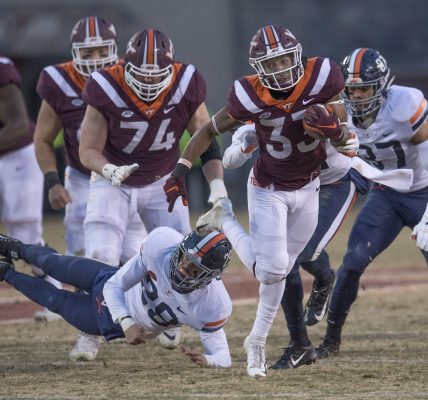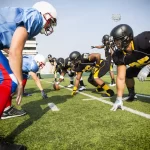Introduction
Equipment Is Needed To Play Badminton: Embarking on a journey into the world of badminton opens up a realm of exhilarating rallies, lightning-fast footwork, and strategic finesse. Whether you’re a novice exploring the sport for the first time or a seasoned player seeking to refine your skills, understanding the essential equipment required for playing badminton is paramount.
At its core, badminton is a sport that demands agility, precision, and athleticism. Unlike its counterparts on the court, such as tennis or basketball, badminton’s simplicity belies its intensity, making it accessible to players of all ages and skill levels. However, behind every smash and drop shot lies a carefully curated arsenal of Equipment Is Needed To Play Badminton designed to optimize performance and enhance the overall playing experience.
In this comprehensive guide, we delve into the fundamental Equipment Is Needed To Play Badminton necessary for playing badminton, from the iconic racket to the shuttlecock that serves as the focal point of every rally. We’ll explore the nuances of selecting the right gear, including considerations such as racket weight, string tension, and grip size, to tailor your equipment to your individual playing style and preferences.
Equipment Is Needed To Play Badminton
Badminton Rackets
The badminton racket is perhaps the most crucial piece of Equipment Is Needed To Play Badminton for any player. It’s essential to choose a racket that suits your playing style, skill level, and physical attributes. Rackets come in a variety of shapes, sizes, and materials, each offering unique characteristics that can impact your game.
Frame: Badminton rackets typically feature a lightweight frame made of materials such as graphite, carbon fiber, or aluminum. Graphite rackets are favored by many players for their combination of strength and agility.
String Tension: The tension of the strings can significantly affect the racket’s performance. Higher tension provides more control but less power, while lower tension offers increased power but less precision.
Grip Size: Racket grips come in various sizes to accommodate different hand sizes and preferences. A comfortable grip is essential for maintaining control and preventing injuries.

Shuttlecocks (Shuttles)
Shuttlecocks are the projectiles used in badminton, and they come in two main types: feather and synthetic. Feather shuttles are typically made from the feathers of ducks or geese and are preferred for their flight characteristics and feel. Synthetic shuttles, on the other hand, are made of nylon and are more durable and suitable for casual play or training sessions.
Feather Shuttlecocks: These shuttlecocks offer superior flight stability and control, making them ideal for competitive play and advanced players.
Synthetic Shuttlecocks: Synthetic shuttles are more affordable and durable, making them suitable for beginners, recreational players, or practice sessions where shuttlecock longevity is essential.
Badminton Shoes
Choosing the right Equipment Is Needed To Play Badminton like footwear is crucial for playing badminton safely and effectively. Equipment Is Needed To Play Badminton like shoes are specifically designed to provide stability, support, and traction on the court, helping players move quickly and change direction with ease.
Non-Marking Soles: Badminton shoes feature non-marking rubber soles that prevent scuffing and damage to indoor court surfaces.
Cushioning and Support: Look for shoes with ample cushioning in the midsole and excellent ankle support to reduce the risk of injuries during intense rallies.
Lightweight Design: Badminton shoes are lightweight to minimize fatigue and allow for fast, agile movements around the court.
Badminton Apparel
While there are no strict dress codes for casual play, wearing appropriate attire can enhance comfort and performance on the court. Breathable, moisture-wicking fabrics are ideal for staying cool and dry during intense matches, while flexible materials allow for unrestricted movement.
Clothing: Opt for comfortable, moisture-wicking tops and shorts or skirts that allow for a full range of motion. Avoid wearing clothing with large pockets or zippers that could interfere with your movements.
Socks: Choose moisture-wicking socks that provide cushioning and support to reduce the risk of blisters and discomfort during prolonged play.
Accessories: Consider wearing a sweatband to keep sweat out of your eyes and a hat or visor to shield your face from the sun during outdoor matches.
Badminton Bags
A good badminton bag is essential for safely transporting and storing your Equipment Is Needed To Play Badminton between matches. Badminton bags come in various sizes and designs, ranging from simple racket sleeves to large, multi-compartment bags capable of holding multiple rackets, shuttlecocks, shoes, and other accessories.
Racket Protection: Look for a bag with padded compartments or sleeves to protect your rackets from damage during transit.
Multiple Compartments: Choose a bag with multiple compartments or pockets to keep your gear organized and easily accessible.
Durability and Comfort: Select a bag made from durable, water-resistant materials with comfortable straps or handles for easy carrying.
Badminton Nets and Posts
A regulation badminton court requires a net and posts to divide the playing area and establish the boundaries of the game. Nets are typically made of fine mesh material suspended from a cord or cable, while posts provide support and stability at either end of the court.
Net Height and Width: The standard height of a badminton net is 5 feet 1 inch (1.55 meters) at the center and 5 feet (1.52 meters) at the edges. The net should also extend to the width of the court, which is 20 feet (6.1 meters) for singles matches and 17 feet (5.18 meters) for doubles matches.
Net Tension: Proper tensioning of the net is essential to ensure a consistent height and prevent sagging during play. Most nets feature an adjustable tensioning system to achieve the correct level of tautness.
Post Stability: Badminton posts should be sturdy and securely anchored to the ground to prevent wobbling or movement during matches. Portable or freestanding posts are available for use in venues without permanent court fixtures.
Grip Tape
Grip tape is an often overlooked but essential accessory for badminton players. Applying grip tape to your racket handle can improve your grip, control, and comfort during play, especially when your hands become sweaty or slippery.

Overgrip vs. Replacement Grip: Overgrip tape is a thin, adhesive tape that is wrapped around the existing grip of the racket handle to provide additional cushioning and tackiness. Replacement grip tape, on the other hand, involves removing the original grip and replacing it entirely with a new one.
Thickness and Texture: Grip tape comes in various thicknesses and textures to suit individual preferences. Thicker tape provides more cushioning and absorption of sweat, while textured tape offers enhanced traction and grip.
Application and Maintenance: Properly applying grip tape to your racket handle is essential for achieving optimal performance and longevity. Replace worn or dirty grip tape regularly to maintain a secure and comfortable grip during matches.
Training Aids and Accessories
In addition to the basic Equipment Is Needed To Play Badminton mentioned above, there are various training aids and accessories available to help players improve their skills, technique, and fitness levels.
Shuttlecock Feeders: Shuttlecock feeders or dispensers are devices that automatically release shuttlecocks at regular intervals, allowing players to practice their shots, footwork, and timing without the need for a partner.
Speed and Agility Equipment: Speed ladders, agility cones, and resistance bands are commonly used to improve footwork, agility, and explosiveness on the court.
Strength and Conditioning Tools: Resistance bands, dumbbells, and balance boards can help players develop strength, power, and stability, enhancing their overall performance and reducing the risk of injuries.
Conclusion
The sport of badminton offers an exciting opportunity for individuals of all ages and skill levels to engage in a thrilling and rewarding physical activity. However, to fully enjoy the game and maximize one’s potential, it is essential to have the right Equipment Is Needed To Play Badminton at hand.
A quality badminton racket is the cornerstone of any player’s gear, providing the power, control, and precision needed to execute shots with finesse. Pairing the racket with high-quality shuttlecocks ensures smooth flight and consistent performance during gameplay.
Furthermore, investing in proper footwear designed specifically for badminton is crucial for maintaining stability, agility, and footwork on the court, reducing the risk of injuries and enhancing overall performance. While these are the primary pieces of Equipment Is Needed To Play Badminton needed to play badminton, players may also consider additional accessories such as grip tape, wristbands, and sports bags to enhance comfort and convenience during matches.










